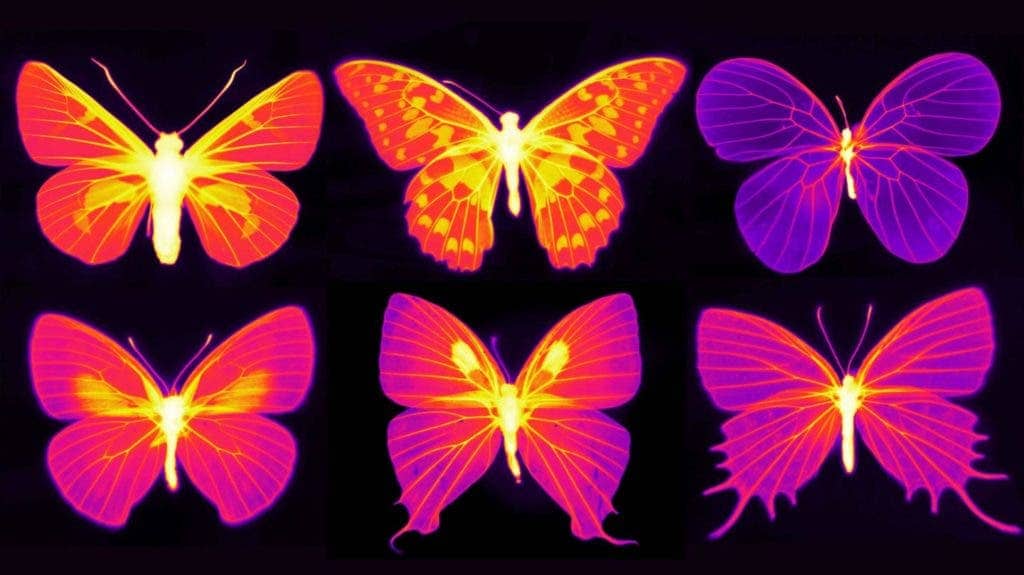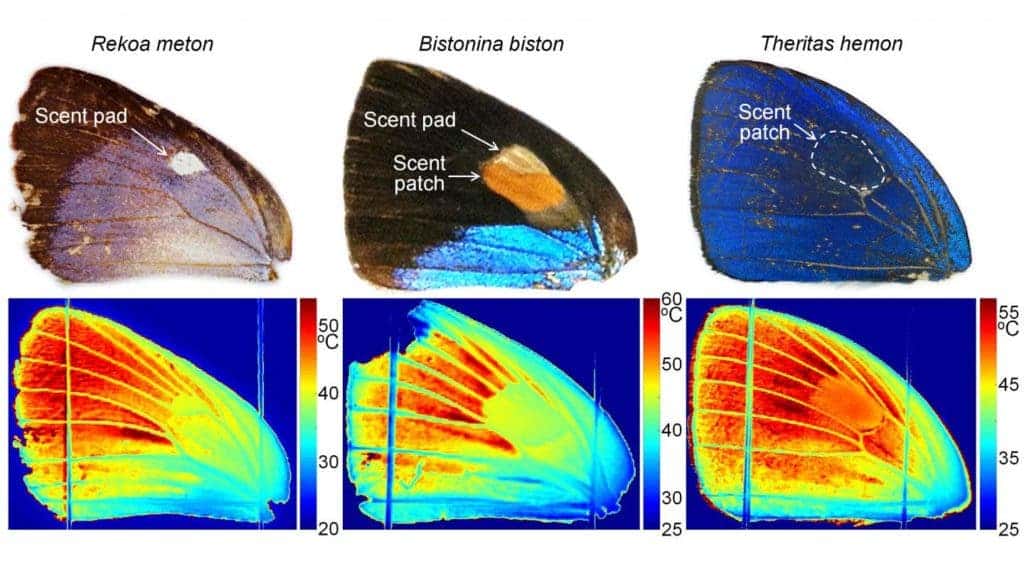Researchers at Columbia and Harvard University have found that butterfly wings are not simply lifeless membranes. Instead, they are riddled with networks of living cells that act like mechanical and temperature sensors.
This allows butterflies to respond quickly to changes in sunlight, thereby protecting their fragile wings from overheating.

“Butterfly wings are essentially vector light-detecting panels by which butterflies can accurately determine the intensity and direction of sunlight, and do this swiftly without using their eyes,” says Nanfang Yu, associate professor of applied physics at Columbia Engineering and co-author of the new study published in Nature Communications.
By carefully removing butterfly wings belonging to various species, and by staining the neurons found within them for better monitoring, the researchers discovered that the interior of the wings is loaded with a network of biological sensors. These living tissues are connected to the insect’s blood or hemolymph circulatory system.
The researchers even discovered a “mini heart” inside the butterfly wings that beats a few dozens of times per minute to facilitate the flow of hemolymph.
“Most of the research on butterfly wings has focused on colors used in signaling between individuals,” said Naomi Pierce, Curator of Lepidoptera at the Museum of Comparative Zoology, Harvard and co-lead author of the new study. “This work shows that we should reconceptualize the butterfly wing as a dynamic, living structure rather than as a relatively inert membrane. Patterns observed on the wing may also be shaped in important ways by the need to modulate temperatures of living parts of the wing.”
The team at Columbia Engineering used infrared hyperspectral imaging to map the temperature distribution over the butterfly wings pixel by pixel. This is the first time that this highly challenging task was performed since the insect’s wings are so delicate and fragile.
Researchers discovered that the nanoscale structures and tissues evenly distribute heat across the butterfly wing, reducing the temperature of living structures (wing vein, scent pads, etc).

In order to test this hypothesis, the scientists performed experiments in the lab that measured the contributions of several environmental factors on wing temperature. These include sunlight intensity, the ambient temperature of the terrestrial surface and that of the air, the latter serving as an efficient heat sink for the butterfly’s wings. This experiment showed that areas of the butterfly wings that contain living tissue are always relatively cooled than the “lifeless” regions.
Another behavioral experiment conducted on living butterflies from six of the seven known butterfly families showed that the insects use their wings to sense the direction and intensity of sunlight. Because sunlight is the main source of heat, the insects have adapted to respond quickly in order to prevent overheating. For instance, individuals from all species turned their wings within seconds of reaching a trigger temperature of 40 degrees Celsius (104 degrees Fahrenheit).
Nanostructures found in the wing scales could someday serve as inspiration for the design of novel radiative cooling materials for applications that have to cope with excessive heat conditions.
“Each wing of a butterfly is equipped with a few dozen mechanical sensors that provide real-time feedback to enable complex flying patterns,” Yu says. “This is an inspiration for designing the wings of flying machines: perhaps wing design should not be solely based on considerations of flight dynamics, and wings designed as an integrated sensory-mechanical system could enable flying machines to perform better in complex aerodynamic conditions.”


